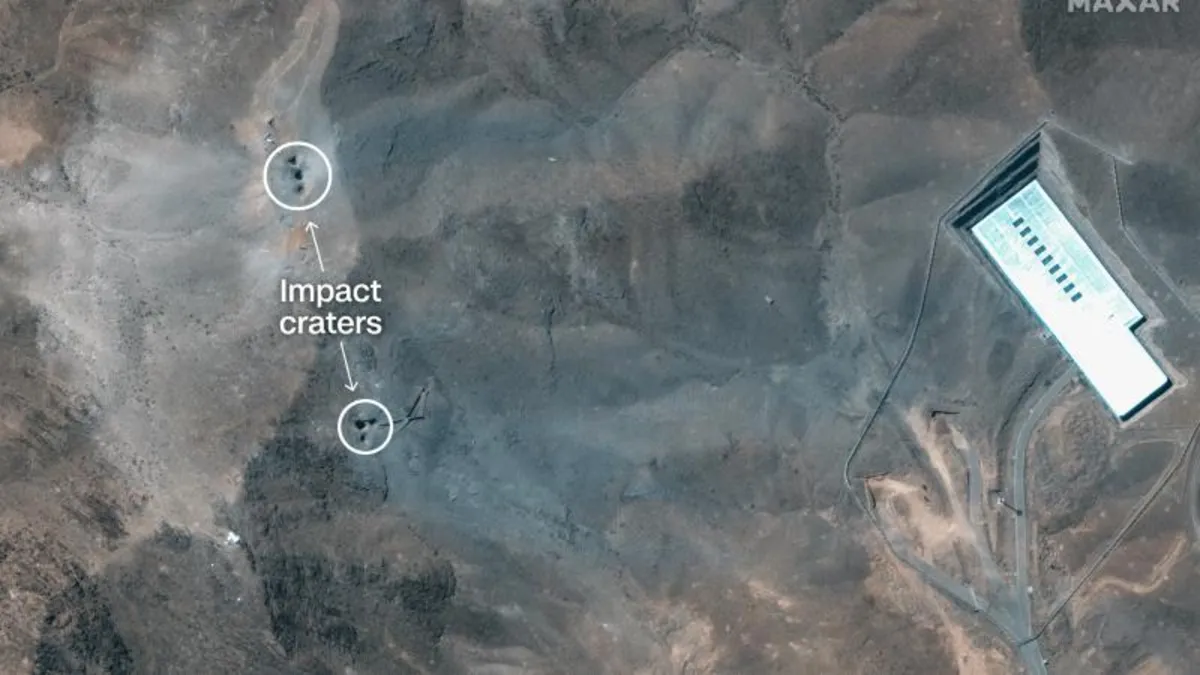
In a dramatic escalation of tensions, US President Donald Trump opted for military action after initially advocating for diplomatic solutions. On a Saturday night, the United States launched a series of airstrikes targeting three critical nuclear facilities in Iran. The strikes involved advanced military technology, including warplanes, submarines, cruise missiles, and massive bombs weighing up to 30,000 pounds. Trump claimed that the attacks had "obliterated" Iran's nuclear capabilities; however, Iranian officials have downplayed the damage, reminiscent of their response to an earlier Israeli strike on June 13.
As satellite imagery of the overnight strikes emerges, analysts are beginning to assess the extent of the damage inflicted on Iran's nuclear program. Notably, the Fordow facility, one of Iran's most significant nuclear enrichment sites, is situated deep within a mountain, making it a challenging target for any military operation.
Fordow is located around 80 to 90 meters (262 to 295 feet) below ground, designed for protection against aerial attacks. Reports indicate that the United States deployed six B-2 bombers to drop twelve of its specialized bunker-busting bombs, the GBU-57, on the site. Analysis of the satellite imagery revealed at least six large craters, confirming the use of these heavy munitions.
Rafael Grossi, the head of the International Atomic Energy Agency (IAEA), stated that there was a "direct kinetic impact" on the Fordow facility. While he acknowledged the possibility of significant internal damage, he emphasized the need for further assessment. David Albright, president of the Institute for Science and International Security (ISIS), noted that the imagery indicated substantial damage could have occurred to the enrichment hall and its supporting structures.
Further analysis by munitions specialist N.R. Jenzen-Jones identified at least six entry points in the Fordow facility post-strike, suggesting multiple munitions targeted the same location. This precision indicates a strategic effort to penetrate deeply buried targets, underscoring the complexity of the operation.
Despite the severity of the attacks, some Iranian officials have minimized the impact. Manan Raeisi, a lawmaker from Qom, near Fordow, characterized the damage as "quite superficial." However, Albright cautioned that such statements should be viewed skeptically, citing historical precedents where Iran has downplayed the effects of military strikes on its nuclear capabilities.
The second target of the US strikes was Natanz, home to Iran's largest nuclear enrichment center. This site has faced previous attacks, including an Israeli strike in June. The IAEA reported that electrical infrastructure at Natanz was damaged, which may have impaired the functionality of centrifuges located within its underground structures.
The US military confirmed that a B-2 bomber dropped two additional bunker-busting bombs on Natanz, while US Navy submarines launched 30 Tomahawk cruise missiles at both Natanz and Isfahan, the third Iranian site targeted. Satellite analysis indicated the emergence of two new craters at Natanz, indicating the effectiveness of the strikes.
Located in central Iran, Isfahan houses the country’s largest nuclear research complex, established with Chinese assistance in 1984. Approximately 3,000 scientists work at this facility, which is suspected of being a core component of Iran's nuclear ambitions.
Post-strike satellite imagery revealed at least 18 structures that were either destroyed or partially damaged. The site appeared significantly altered, with evidence of extensive rubble and blackened areas resulting from the attacks. Albright indicated that there were initial reports of strikes targeting tunnel complexes near Isfahan, potentially aimed at depleting Iran's stockpiles of enriched uranium.
During a Pentagon briefing, General Dan Caine, Chairman of the Joint Chiefs of Staff, confirmed that US submarines launched more than a dozen cruise missiles against strategic infrastructure at Isfahan, further emphasizing the scale of the military operation.
As the dust settles from these unprecedented military strikes, the long-term impact on Iran's nuclear program remains uncertain. The combination of advanced weaponry and strategic military planning demonstrates the US's commitment to countering perceived threats from Iran. With satellite imagery still being analyzed and reports emerging from both US and Iranian officials, the situation continues to evolve, leaving questions about the future of diplomatic relations and nuclear capabilities in the region.